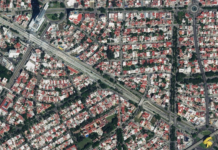David Cox, head of the MIT-IBM Watson AI Lab, believes neuro-symbolic AI will bridge the game that keeps computers from reasoning like humans today.
“A neuro-symbolic AI system combines neural networks/deep learning with ideas from symbolic AI. A neural network is a special kind of machine learning algorithm that maps from inputs (like an image of an apple) to outputs (like the label “apple”, in the case of a neural network that recognizes objects). Symbolic AI is different; for instance, it provides a way to express all the knowledge we have about apples: an apple has parts (a stem and a body), it has properties like its color, it has an origin (it comes from an apple tree), and so on,” said Cox.
“Symbolic AI allows you to use logic to reason about entities and their properties and relationships. Neuro-symbolic systems combine these two kinds of AI, using neural networks to bridge from the messiness of the real world to the world of symbols, and the two kinds of AI in many ways complement each other’s strengths and weaknesses. I think that any meaningful step toward general AI will have to include symbols or symbol-like representations,” he added.
Currently, deep learning neural networks can recognize patterns but lack the reasoning and that is where the symbolic part comes in. It can reason about symbols, objects, and the relationships between them. Taken together, neuro-symbolic AI goes beyond what current deep learning systems are capable of doing.
“One of the reasons why humans are able to work with so few examples of a new thing is that we are able to break down an object into its parts and properties and then to reason about them. Many of today’s neural networks try to go straight from inputs (e.g. images of elephants) to outputs (e.g. the label “elephant”), with a black box in between. We think it is important to step through an intermediate stage where we decompose the scene into a structured, symbolic representation of parts, properties, and relationships,” said Cox.
A neuro-symbolic system applies logic and language processing to answer a question in a similar way to how a human would reason.
The next evolution in AI
“We’ve got over 50 collaborative projects running with MIT, all tackling hard questions at the frontiers of AI. We think that neuro-symbolic AI methods are going to be applicable in many areas, including computer vision, robot control, cybersecurity, and a host of other areas. We have projects in all of these areas, and we’ll be excited to share them as they mature,” Cox said.
Irina Rish, an Associate Professor in the Computer Science and Operations Research department at the Université de Montréal (UdeM), agrees that neuro-symbolic AI is worth pursuing but believes that “growing” symbolic reasoning out of neural networks, may be more effective in the long-run.
“We all agree that deep learning in its current form has many limitations including the need for large datasets. However, this can be either viewed as criticism of deep learning or the plan for future expansion of today’s deep learning towards more capabilities,” Rish said.
Rish sees current limitations surrounding ANNs as a ‘to-do’ list rather than a hard ceiling. Their dependence on large datasets for training can be mitigated by meta- and transfer-learning, for instance. What’s more, the researcher argues that many assumptions in the community about how to model human learning are rather flawed, calling for more interdisciplinary research.
“A common argument about “babies learning from a few samples unlike deep networks” is fundamentally flawed since it is unfair to compare an artificial neural network trained from scratch (random initialization, some ad-hoc architectures) with a highly structured, far-from-randomly initialized neural networks in baby’s brains, incorporating prior knowledge about the world, from millions of years of evolution in varying environments. Thus, more and more people in the deep learning community now believe that we must focus more on interdisciplinary research on the intersection of AI and other disciplines that have been studying brain and minds for centuries, including neuroscience, biology, cognitive psychology, philosophy, and related disciplines,” she said.
Rish points to exciting recent research that focuses on “developing next-generation network-communication based intelligent machines driven by the evolution of more complex behavior in networks of communicating units.” Rish believes that AI is naturally headed towards further automation of AI development, away from hard-coded models. In the future, AI systems will also be more bio-inspired and feature more dedicated hardware such as neuromorphic and quantum devices.
“The general trend in AI and in computing as a whole, towards further and further automation and replacing hard-coded approaches with automatically learned ones, seems to be the way to go,” she added.
For now, neuro-symbolic AI combines the best of both worlds in innovative ways by enabling systems to have both visual perception and logical reasoning. And, who knows, maybe this avenue of research might one day bring us closer to a form of intelligence that seems more like our own.








